
How To Make Your Own Compost At Home With Compostable Trash Bags
By Evert Heijns | June 23, 2023
Composting is a sustainable and environmentally friendly practice that many people are adopting in their homes. It involves breaking down organic waste into nutrient-rich soil that can be used to fertilize gardens and potted plants.
Composting not only reduces the amount of waste sent to landfills but also helps to reduce greenhouse gas emissions from decomposing organic matter. One way to make composting more convenient is by using compostable trash bags, which can be added directly to your compost bin along with other organic materials.
This article will provide a step-by-step guide on how to make your own compost at home using compostable trash bags. From setting up your compost bin correctly to troubleshooting common issues, we will cover everything you need to know about creating nutrient-rich soil for your garden while reducing your environmental impact.
Key Takeaways
- Composting is a sustainable and environmentally friendly way to break down organic waste into nutrient-rich soil while reducing waste sent to landfills and greenhouse gas emissions.
- Compostable trash bags can make composting more convenient and reduce methane emissions from landfills while improving soil quality and reducing the need for chemical fertilizers.
- Choosing the right compostable trash bags, setting up a compost bin in an ideal location with necessary tools and a balanced mix of organic materials, and regular turning or mixing of materials are crucial for successful composting.
- Composting takes effort and patience but produces nutrient-rich soil for nourishing plants and gardens, contributing towards healthier ecosystems overall through responsible waste management practices.
- Key Takeaways
- Understanding the Benefits of Composting
- Choosing the Right Compostable Trash Bags
- Setting Up Your Compost Bin
- Adding Compostable Materials to Your Bin
- Maintaining Your Compost Pile
- Turning Your Compost for Optimal Results
- Harvesting and Using Your Compost
- Troubleshooting Common Composting Issues
- Frequently Asked Questions
- Conclusion
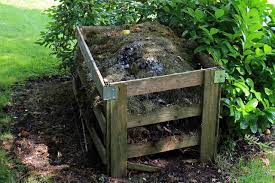
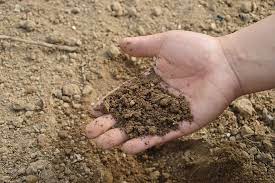
Understanding the Benefits of Composting
The advantages of composting extend beyond waste reduction and include soil enrichment, reduced greenhouse gas emissions, and decreased reliance on chemical fertilizers. Composting methods vary depending on the size of the operation, but all involve mixing organic matter such as food scraps, yard waste, and leaves to create a nutrient-rich soil amendment.
This process also helps to reduce harmful methane emissions that contribute to climate change in landfill environments. Composting has a significant environmental impact by reducing the amount of organic waste sent to landfills.
When organic waste decomposes in landfills, it produces methane gas which is a potent greenhouse gas with 25 times more heat-trapping ability than carbon dioxide. By diverting this material from landfills through composting instead, we can reduce our carbon footprint while simultaneously creating valuable fertilizer for plants.
In addition to its environmental benefits, composting can also help improve soil quality by increasing water retention and decreasing erosion. It also reduces the need for chemical fertilizers that can harm local ecosystems when they leach into groundwater or runoff into streams and rivers.
With so many benefits to composting, it’s no wonder why more people are choosing this sustainable method over conventional disposal practices.
Now let’s explore how you can start your own compost at home using compostable trash bags.


Choosing the Right Compostable Trash Bags
Selecting appropriate environmentally-friendly materials is crucial for successful composting. When it comes to choosing the right compostable trash bags, there are several eco-friendly options available in the market.
These bags are made from plant-based materials such as corn starch, sugarcane, or potato starch. They break down easily and do not release harmful toxins into the environment during decomposition.
When selecting a compostable trash bag, it is important to consider its durability and strength. The bag should be able to hold organic waste without tearing or leaking. Some brands offer thicker bags that can hold heavier waste while others may provide smaller bags suitable for kitchen scraps only.
It is also essential to check if the bag meets industry standards such as ASTM D6400 or EN 13432 which guarantee that it will break down within a certain timeframe under specific conditions.
In addition to choosing the right compostable trash bags, setting up your compost bin requires careful consideration of other factors such as location, size, and maintenance requirements.
By taking these steps towards establishing an effective home composting system, you can reduce your carbon footprint and contribute towards a more sustainable future for our planet.
Setting Up Your Compost Bin
To successfully establish a composting system, it is important to carefully consider factors such as location, size, and maintenance requirements. The ideal location for a compost bin is in an area that receives partial sunlight and has good drainage. It should also be easily accessible for adding materials and turning the compost pile.
The size of the bin will depend on how much waste you generate and the available space in your yard or garden. Necessary tools for setting up a compost bin include a container or bin, a shovel or pitchfork for turning the compost pile, and a water source for maintaining moisture levels.
There are many types of containers available to purchase or make at home using materials such as wood pallets or wire mesh. It is important to choose a container with good ventilation to allow air flow through the pile. Once you have chosen an ideal location and gathered necessary tools, you can begin setting up your compost bin.
Start by placing the container on top of soil rather than concrete to allow beneficial organisms access to the compost pile. Then add a layer of carbon-rich materials such as leaves or straw followed by nitrogen-rich materials such as kitchen scraps or grass clippings.
Continue alternating layers until the pile reaches 3-4 feet tall. With regular maintenance including turning every few weeks and adding water as needed, your compost will be ready in several months time. As you begin adding compostable materials to your bin, it is important to remember that not all household waste should be added.
Avoid adding meat, dairy products, bones, and oils which can attract pests and slow down decomposition. Instead focus on adding fruit peels, vegetable scraps, coffee grounds, eggshells and other organic matter that will break down into nutrient-rich soil amendment over time.

Adding Compostable Materials to Your Bin
Adding the right mix of organic materials to your compost bin is crucial for successful decomposition and nutrient-rich soil amendment. Compostable materials are divided into two categories: greens and browns. Greens, such as food scraps and fresh grass clippings, provide nitrogen, while browns, such as dried leaves and twigs, provide carbon.
A balance between these two types of material is necessary for healthy decomposition. One common mistake in composting is adding too much green material without enough brown material to offset it. This can lead to a slimy, smelly mess that attracts pests.
Another myth is that you need to add earthworms or special additives to your compost pile for it to work properly. While worms can be beneficial, they will naturally come if conditions are favorable. And while some additives may speed up the process slightly, composting can happen without them.
To maintain a successful compost pile, regular turning or mixing of materials helps ensure even decomposition and prevents odors from forming. Besides that, keeping the moisture level consistent by watering occasionally or covering during heavy rain will aid in the breakdown process.
By following these tips and avoiding common mistakes and myths surrounding composting practices, you’ll be well on your way to producing nutrient-rich soil amendment for your garden.
Maintaining Your Compost Pile
Regular turning or mixing of materials is a key factor in maintaining a healthy compost pile, ensuring even decomposition and preventing the formation of odors. Composting frequency plays an important role in this process as well.
Typically, compost piles should be turned or mixed at least once a week to ensure that the materials are breaking down evenly and efficiently. However, if you live in a colder climate, it may take longer for your compost to break down, so turning it less frequently may be necessary.
There are several composting techniques that can help you maintain your compost pile. One effective technique is layering your materials. Start with a layer of brown materials such as dry leaves or shredded paper, followed by green materials like grass clippings and food scraps. Repeat these layers until your pile is about three feet high.
Another useful technique is adding water to your pile regularly to keep it moist but not soggy. Maintaining your compost pile takes effort and patience, but the end result is worth it: nutrient-rich soil that can be used to nourish plants and gardens.
Turning your compost for optimal results involves more than just flipping it over; there are specific steps you can take to ensure that all parts of the pile are being broken down evenly. By following these steps and continuing to monitor the health of your compost pile, you can create high-quality soil for years to come.
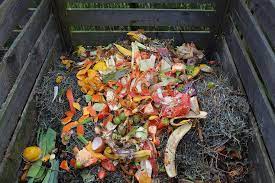
Turning Your Compost for Optimal Results
Achieving optimal results in composting requires careful turning and mixing of materials to ensure even decomposition and prevent the formation of unpleasant odors. Compost aerating techniques such as turning the pile with a pitchfork or using a compost tumbler can help break down the materials faster and provide oxygen to microorganisms that aid in decomposition.
Turning your compost pile also helps distribute moisture evenly, preventing dry spots from forming. Composting tool recommendations include a pitchfork or garden fork for manually turning your pile, or a compost tumbler for those who prefer a more hands-off approach.
A compost thermometer can be useful for monitoring the temperature of your pile, which should ideally reach between 130-160°F (54-71°C) to kill off any potential pathogens and weed seeds. If you notice an unpleasant odor coming from your pile or it’s not breaking down as quickly as you’d like, try adding more nitrogen-rich green materials such as grass clippings or vegetable scraps.
By properly aerating and mixing your compost, you’ll create an environment that’s conducive to rapid decomposition and minimal odor. Once your compost is ready, it can be harvested by sifting out any large chunks or uncomposted material before using it in your garden beds or potting soil. In the next section, we’ll discuss how to use this nutrient-rich soil amendment to improve plant growth and reduce waste.
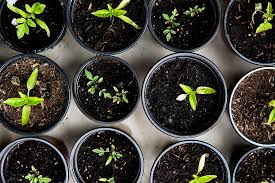
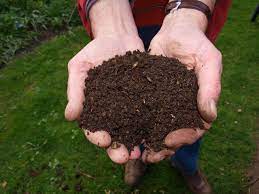
Harvesting and Using Your Compost
Harvesting and utilizing nutrient-rich compost is a vital step in sustainable gardening practices that can significantly improve plant growth and reduce environmental waste. Using compost in your garden can help retain moisture, suppress weeds, and provide essential nutrients to plants.
Once the compost is ready, it can be spread evenly over the soil surface or mixed into the soil for better absorption. Composting with worms, also known as vermiculture, is an effective method of producing high-quality compost at home. Worms break down organic materials into nutrient-rich castings that are rich in nitrogen, phosphorus, potassium, and other trace elements essential for plant growth.
To start composting with worms, create a worm bin by layering shredded paper or cardboard with food scraps such as fruit and vegetable peels. In addition to providing numerous benefits to your garden, using compost instead of chemical fertilizers helps reduce greenhouse gas emissions associated with traditional farming methods.
Troubleshooting common composting issues such as foul odors or slow decomposition rates may require adjusting the mix of materials or adding more oxygen through aerating the pile regularly.
By taking steps towards responsible waste management practices through home composting techniques like these ones mentioned here today you will be on your way to creating not only productive gardens but also contributing towards healthier ecosystems overall!
Troubleshooting Common Composting Issues
Now that you know how to harvest and use your compost, it’s time to address some common issues that may arise during the process. One of the most significant concerns with composting is the odor that can emanate from the pile. This smell is caused by an excess of nitrogen or moisture in the mix, which leads to anaerobic conditions and unpleasant odors.
To prevent this issue, make sure to balance your carbon-rich materials (such as leaves or straw) with nitrogen-rich ones (like food scraps or grass clippings). Furthermore, ensure good airflow throughout your compost by turning it regularly and adding bulking agents like wood chips or shredded paper.
Another problem you may encounter is slow composting. If your pile isn’t breaking down as quickly as you’d like, there are a few potential causes. Firstly, ensure that you’re providing enough moisture – if your mix is too dry, decomposition will slow down significantly. Conversely, if it’s too wet, anaerobic conditions will develop and lead to odor issues.
Additionally, make sure that you’re not adding any materials that don’t belong in a compost pile – such as meat or dairy products – which can take longer to break down and disrupt the natural decomposition process. Finally, consider adding a compost accelerator product or making adjustments to the size of your pile to encourage faster decomposition.
By troubleshooting these common issues and maintaining a healthy balance of materials in your compost pile, you’ll be well on your way towards creating rich soil for your garden or plants!
Frequently Asked Questions
Can I use regular trash bags instead of compostable ones?
Using regular trash bags instead of compostable ones can have a negative environmental impact. A cost comparison shows that biodegradable or compostable bags may be more expensive, but they are a better option for reducing waste and promoting sustainability.
How long does it take for compost to be ready to use?
The time it takes for compost to be ready varies based on factors affecting composting speed, such as temperature, moisture level, and carbon-to-nitrogen ratio. Composting dos and don’ts include adding diverse materials and avoiding meat or dairy.
Can I compost meat and dairy products?
Composting meat and dairy is controversial due to their slow decomposition rates, potential odor issues, and attraction of pests. However, with proper management techniques such as burying them deep in the compost pile, they can be safely composted.
Is it necessary to add worms to my compost bin?
Worm composting, or vermicomposting, can accelerate decomposition in a compost bin by breaking down organic matter more efficiently. However, alternative methods such as turning the pile and adding nitrogen-rich materials can also increase decomposition rates. The benefits of worm composting include improved soil health and nutrient availability for plants.
What do I do if my compost pile smells bad?
Composting troubleshooting often involves addressing unpleasant odors emanating from the pile. To control odor, maintain a proper balance of carbon and nitrogen-rich materials, avoid adding meat or dairy products, and turn the pile regularly.
Conclusion
Composting is a sustainable practice that offers numerous benefits to both the environment and gardeners. By recycling organic waste, composting reduces landfill waste and greenhouse gas emissions while enriching soil with valuable nutrients.
To start composting at home, it is essential to choose the right compostable trash bags and set up a compost bin. Compostable materials such as food scraps, yard trimmings, and paper products can then be added to the bin and maintained through regular turning and watering.
To optimize your compost results, it is crucial to maintain balance in your pile by adding both nitrogen-rich ‘green’ materials like kitchen scraps and carbon-rich ‘brown’ materials like leaves or sawdust. Turning your pile every few weeks will also help aerate the compost for optimal decomposition.
Troubleshooting common issues such as unpleasant odors or slow decomposition can be addressed through proper maintenance techniques. By following these simple steps, you can create nutrient-rich compost for use in gardens or houseplants while simultaneously reducing environmental impact.
With just a little effort and attention, anyone can make their own compost at home using only biodegradable materials.
For more lifestyle blog posts go to this page.
